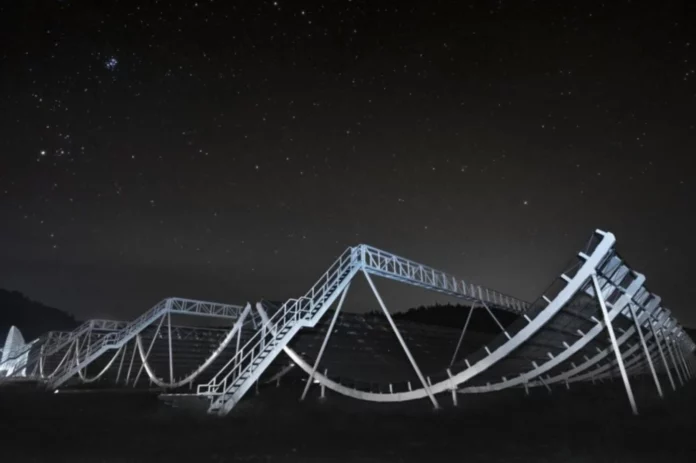In February 2024, scientists on Earth detected a powerful radio blast from space. In an effort to find out where it came from, they traced the short burst of energy to its extraterrestrial source – and discovered something unexpected.
Scientists led by Northwestern University and McGill University have traced a fast radio burst (FRB) to the edges of an ancient elliptical galaxy. Previously, scientists believed that these fast radio bursts, which generate more energy in a single flash than our Sun produces in an entire year, were caused exclusively by young galaxies that are constantly giving birth to new stars. However, recent research detailed in two related papers published on January 21 in The Astrophysical Journal Letters is prompting astronomers to reconsider the potential diversity of FRB flare sources.
Dubbed FRB 20240209A, the February 2024 outburst was not a one-time event. From February to July 2024, this source flared 21 times.
“The prevailing theory is that FRBs originate from magnetars, which are formed by the collapse of a supernova core,” said Tarraneh Eftekhari of Northwestern University, who participated in both studies, in a university statement. Magnetars are neutron stars with very powerful magnetic fields, and neutron stars are extremely small and dense celestial objects that are thought to form after the explosive death of some large stars, i.e. supernovae.
“This does not seem to be the case,” Eftekhari continues. “While young massive stars end their lives as supernovae with core collapse, we see no sign of young stars in this galaxy. With this new discovery, a picture is emerging that shows that not all FRBs originate from young stars. There may be a subpopulation of FRBs that are associated with older systems.”
The old galaxy in question is 11.3 billion years old and is located 2 billion light-years away. Using computer modeling, Eftekhari and her colleagues found that the galaxy is extremely bright and 100 billion times more massive than our Sun.
“It appears to be the most massive FRB host galaxy to date,” Eftekhari said. “It’s one of the most massive galaxies in the cosmos.” Not only does the unusual FRB come from an old galaxy, but it is also located on the edge of that galaxy, namely, 130,000 light-years from its center.

“Among the FRB population, this FRB is located [farthest] from the center of its host galaxy,” said McGill’s Vishwangi Shah, who participated in both studies. “This is both surprising and exciting, as FRBs are expected to originate inside galaxies, often in stellar regions. The location of this FRB so far outside the parent galaxy raises the question of how such energetic events can occur in regions where no new stars are forming.”
But FRB 20240209A is not the first FRB discovered far from regions of active star formation – it is the second. In 2022, astronomers traced the M81 FRB, which is 12 million light-years away from Earth, to a cluster of stars at the edge of the Messier 81 galaxy.
FRB 20240209A “may be a twin of the M81 event [M81 FRB]. It is far from its home galaxy (far from where stars are born), and the stellar population in its home galaxy is extremely old. It’s past its prime, and now it’s retiring,” says Wen-Fai Fong of Northwestern University, who participated in both studies. “At the same time, this type of old environment is forcing us to rethink our standard models of FRB precursors and look at more exotic formation channels, which is very interesting.”
One study suggests that, like the M81 FRB, the new FRB could also have originated from a cluster of stars called a globular cluster.
“The origin of this recurring FRB from a globular cluster is the most likely scenario to explain why this FRB is located outside its galaxy,” Shah explained. “We do not know for sure whether a globular cluster exists at the location of the FRB, and have submitted a proposal to use the James Webb Space Telescope to further observe the FRB’s location. If so, this FRB will be only the second FRB known to be in a globular cluster. If not, we will have to consider alternative exotic scenarios for the origin of FRBs.”









